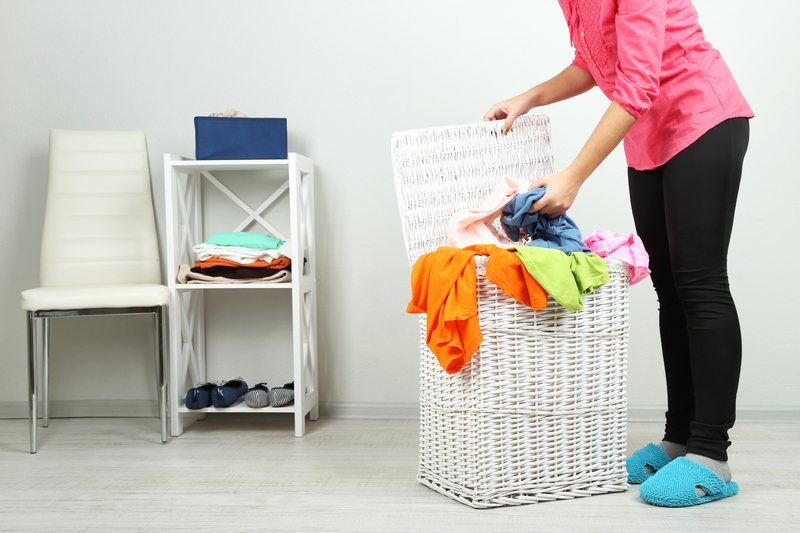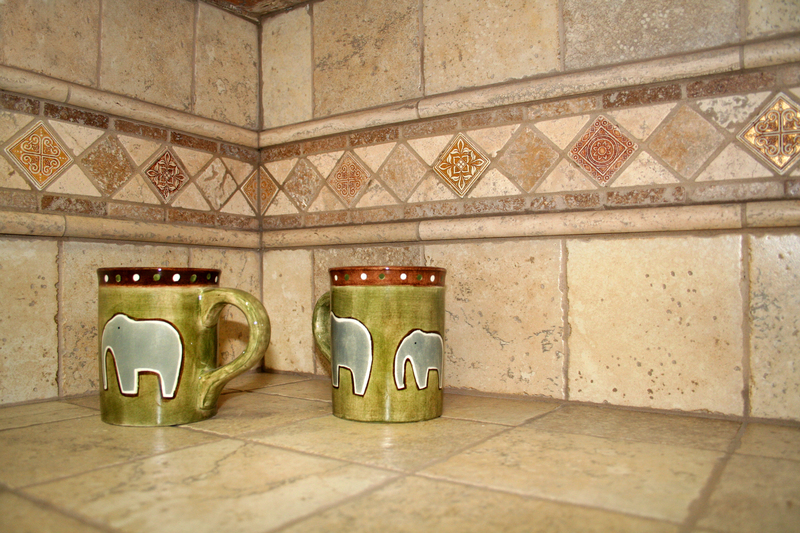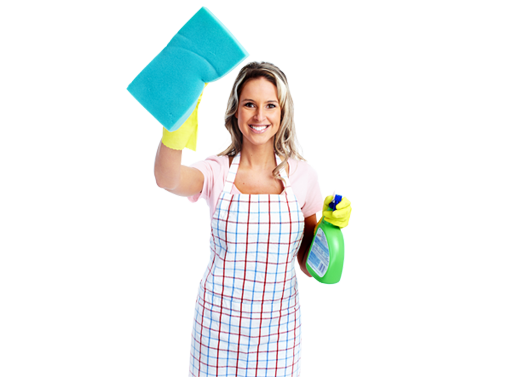The Ultimate Guide to Cleaning Stovetop Burnt Residue
Posted on 03/07/2025
The Ultimate Guide to Cleaning Stovetop Burnt Residue
Is your stovetop suffering from stubborn burnt-on spills? Persistent burnt residue on stovetops can turn an otherwise spotless kitchen into a messy eyesore. Whether you have a gas, electric, or glass-top stove, ongoing residue buildup isn't just unattractive—it can also interfere with the proper functioning of your appliances. If you've ever wondered how to clean burnt-on stains from your stovetop, this comprehensive guide offers everything you need to know. Read on for effective stovetop cleaning solutions, preventative maintenance tips, and safe cleaning methods for every type of stove!
Understanding Stovetop Burnt Residue: Why Does It Happen?
Residue and burnt stains on stovetops typically result from spills of food, sauces, or oils that aren't immediately wiped away. Once exposed to high heat, these substances harden and cling stubbornly to the surface, often requiring more than a quick wipe to remove.
Main Causes of Stovetop Burnt Residue
- Food Spills: Overflows and splatters from boiling pots.
- Oil and Grease: Frying and sauteing can leave behind tough-to-clean grease stains.
- High Temperatures: Heat bakes spills onto the stovetop, setting them into tough carbonized residue.
- Lack of Immediate Cleaning: The longer a spill sits, the harder it becomes to remove.

Essential Supplies for Cleaning Stubborn Stovetop Residue
You don't need expensive, harsh chemicals to achieve a sparkling clean stovetop. Some everyday household items and a few specialty products can outperform store-bought cleaners for burnt residue.
Basic Cleaning Arsenal
- Baking Soda - Natural abrasive for scrubbing.
- White Vinegar - Cuts through grease and helps lift scorched stains.
- Dish Soap - Dissolves oils and softens burnt layers.
- Non-Scratch Scrubbing Pads - For effective scrubbing without surface damage.
- Plastic Scraper - To gently lift away hardened spills (especially useful for glass stoves).
- Microfiber Cloths - For streak-free polishing.
- Lemon Juice - A natural degreaser and deodorizer.
- Hydrogen Peroxide - For whitening and lifting stubborn stains.
- Razor Blade Scraper - Safe for use only on flat glass surfaces; never on metal or electric coils.
Safety Precautions Before You Begin
- Turn Off Burners and allow the stovetop to cool completely before cleaning.
- Unplug Burner Elements or remove grates for safer, more thorough cleaning.
- Always reference your manufacturer's cleaning guidelines to avoid voiding a warranty or damaging specialty surfaces.
Step-by-Step: How to Clean Burnt Residue from Every Stovetop Type
Cleaning burnt residue techniques differ depending on the type of stovetop you have. Here's how to tackle those tough stains for gas, electric coil, and glass/ceramic stoves.
1. Gas Stovetop Burnt Residue Removal
- Remove all burner grates and burner heads. Soak them in warm, soapy water to loosen any built-up grime.
- Mix a paste of baking soda and water. Apply generously to stubborn burnt areas on the stovetop surface.
- Let the paste sit for at least 15 minutes to lift baked-on food and spills.
- Use a non-scratch scrubbing pad or an old toothbrush to scrub residue gently. Don't use steel wool, as it can scratch enamel or stainless surfaces.
- For lingering stains, pour a small amount of white vinegar over the baking soda paste — it will fizz and help dissolve tough debris.
- Wipe away loosened grime and residue with a damp microfiber cloth.
- Scrub burner grates and heads separately. For extra-tough grime, use a degreasing dish soap or a paste of lemon juice and baking soda.
- Once clean, dry all components thoroughly before reassembling your stovetop.
2. Cleaning Burnt Residue from Electric Coil Stovetops
- Remove electric coils (if possible) by gently lifting and pulling outward.
- Wipe down coils with a damp cloth; for deep cleaning, use a paste of baking soda and water on stubborn residue. Don't immerse coils in water.
- Remove drip pans and soak them in hot soapy water for 15-30 minutes. Scrub with a non-abrasive pad.
- For burnt stains on drip pans, make a paste with baking soda and hydrogen peroxide. Let stand for 20 minutes before scrubbing and rinsing.
- Clean the stove's main surface using your preferred cleaner (vinegar for grease, baking soda paste for set stains).
- Reinstall clean coils and drip pans thoroughly dried.
3. Banishing Burnt Residue on Glass & Ceramic Stovetops
- Wipe away loose debris with a damp microfiber cloth.
- Sprinkle baking soda directly on the burnt residue.
- Lightly drizzle white vinegar over the baking soda. It will fizz, helping to break down scorch marks.
- Place a clean, damp towel over the mixture. Let sit for 15-30 minutes. This softens the residue for easier removal.
- Use a plastic scraper or (carefully) a razor blade held at a 45-degree angle. Gently scrape off loosened burnt spots. Avoid excessive pressure to prevent scratching.
- Remove all residue and polish with a clean, damp microfiber cloth.
- For finishing, buff the surface with a solution of water and a drop of dish soap for streak-free shine.
Expert Tips & Tricks for Stubborn Burnt Residue on Stovetops
Even after your best cleaning efforts, some scorched stovetop stains might persist. Don't worry! These additional methods can rescue your appliances:
1. Hydrogen Peroxide & Baking Soda Soak
For nearly impossible-to-remove scorch marks, sprinkle a thick layer of baking soda over the stain and cover with hydrogen peroxide. Allow to bubble and soak for up to an hour. The combination acts as a stain-lifting powerhouse, breaking down burnt residue for easier removal.
2. Use a Specialized Stovetop Cleaner
There are many ceramic stove top cleaners and degreasers available that are specifically formulated for tough burnt-on messes. Products like Bar Keepers Friend or Weiman Cooktop Cleaner are safe and effective solutions for many stovetop surfaces.
3. Steam Cleaning for Burnt Stove Tops
- If you own a steam cleaner, use the attachment to blast away stubborn residue without any chemicals at all.
- The heat and moisture loosen even the most persistent burnt spots, making them easier to wipe away.
4. Lemon and Salt Scrub
For a natural, non-toxic approach: Sprinkle coarse salt on the stain, then use half a lemon to scrub the surface. The acidity and abrasion combine to dissolve burnt residue and leave a fresh citrus scent.
Common Mistakes to Avoid When Cleaning Stovetop Burnt Residue
To preserve your stove's finish and ensure safe, effective residue removal, avoid these pitfalls:
- Don't use harsh metal scrubbers or abrasive powders; these can scratch enamel, stainless steel, and ceramic finishes.
- Avoid harsh chemicals like ammonia or bleach, especially on sensitive glass or ceramic cooktops.
- Never attempt to clean a hot stovetop; sudden temperature changes can cause cracks or burns.
- Don't use the self-cleaning oven feature for stovetop grates, unless your manufacturer suggests it.
- Never submerge electric coils in water; only wipe with a damp cloth.
Preventing Burnt Residue on Stovetops: Maintenance Tips
The best way to minimize burnt-on residue is regular, proper cleaning. Here are proven strategies to keep your stovetop sparkling clean and residue-free:
- Wipe up spills immediately (once cool), preventing them from baking onto your stove.
- Use drip pans or splatter guards when frying or boiling over-prone dishes.
- Deep-clean grates, burners, and drip pans weekly or after heavy use.
- Give the stovetop a daily wipe-down with a microfiber cloth and mild dish soap solution.
- Use gentle, non-abrasive cleaners regularly; avoid "miracle" products that could damage your stove's surface.
- Inspect for burnt residue frequently, focusing on hard-to-see areas around burners and controls.

Frequently Asked Questions: Cleaning Burnt Stovetop Residue
Q: What is the fastest way to remove burnt-on residue from my stovetop?
A: The quickest method is soaking the stain with baking soda and vinegar, letting it fizz for 10-15 minutes, then gently scrubbing with a non-abrasive pad. For glass stovetops, use a razor blade scraper to lift the residue after soaking.
Q: Are commercial stove top cleaners better than homemade remedies?
A: Both can be effective. Commercial cleaners like Bar Keepers Friend are designed for tough residues, but DIY methods using baking soda, vinegar, and dish soap are often just as efficient and safer for most surfaces.
Q: Can I use a Magic Eraser on stovetops?
A: Magic Erasers can clean many surfaces, but use them cautiously on glass and enamel, as overuse can dull the finish. Always test on a hidden spot first.
Q: How do I get burnt stains off stainless steel stovetops?
A: Use a paste of baking soda and water, apply to the stain, let it sit, then gently rub with a microfiber cloth. You can also try a commercial stainless-steel cleaner for a streak-free result.
Q: My burnt residue won't budge. When should I call for professional help?
A: If you've tried multiple cleaning methods and residue persists, or if you see discoloration or surface damage, contact a professional appliance cleaner to avoid accidental damage.
Conclusion: Achieve a Spotless, Burnt-Free Stovetop
Burnt-on stovetop residue doesn't have to mar your kitchen's beauty or functionality. By following these expert methods and tips for removing burnt residue from stovetops, you can tackle everything from everyday spills to the most stubborn scorch marks. Regular, careful cleaning and quick attention to spills will keep your stove looking new--and make every meal prep session a pleasure.
Bookmark this Ultimate Guide to Cleaning Stovetop Burnt Residue for quick reference the next time you face a tough cooker-cleaning challenge. Your stovetop will thank you!





